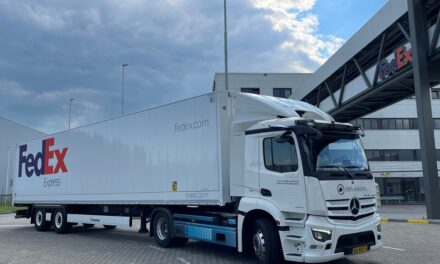
Greener transport helps FedEx cut emissions by 13.5%
FedEx Corp has taken big strides to reduce its consumption of petroleum and cut its carbon emissions, according to its latest Global Citizenship report. The company has been aiming at a target of reducing its carbon emissions by 20% by 2020, compared to a 2005 baseline, and so far up to the end of the 2010 calendar year, it has achieved a 13.5% drop.
FedEx said in its report that research it has commissioned from Yale University suggests policies and practices that protect the environment can improve trade competitiveness. With the transportation a big part of the company’s operating costs, being greener has also helped improve operational efficiency.
FedEx Chairman Frederick W Smith said: “We’ve focused great efforts over the past year on reducing our dependence on petroleum.
“Every day, we deliver more than 8.5 million shipments to more than 220 countries and territories. Every day, we fly the equivalent of a half-million miles, and drive almost 12 million miles. That’s why we’ve advocated for a future light-vehicle
transportation system that relies more on electricity and less on oil.”
Aircraft
One of the key components of FedEx’s air strategy is to switch to the Boeing 777 Freighter aircraft, which flies farther on less fuel, while carrying more cargo than the company’s older MD-11 aircraft.
The 777 has 14,000lbs more cargo capacity than the MD-11 being replaced, and offers 1,900 nautical miles greater range, while consuming 18% less fuel and emitting 18% less carbon dioxide per ton of cargo.
FedEx, which has just added six more 777s to increase the number in its fleet to 12, said the move is achieving a “steep” reduction in cost and emissions per unit transported.
The firm aims to have 45 of the 777 aircraft in service by 2020.
The company, which has 670 aircraft in its fleet in total, is also replacing its smaller Boeing 727 aircraft with more efficient 757s, which have a 47% lower fuel consumption per unit transported, as well as lower maintenance costs.
Ground transport
FedEx is aiming to boost the fuel efficiency of its vehicle fleet by 20% by 2020 (compared to 2005), and has so far achieved a 15.1% figure.
With its chairman a big supporter of electric vehicle technology – as co-chair of the Energy Security Leadership Council industry group, Smith has lobbied Congress for more support for the technology – FedEx has been working to expand its use of electric and hybrid vehicles.
By the end of the 2011 financial year, the company had increased its electric and hybrid fleet by 20% to 408 vehicles, which logged almost 9.5m miles while saving 276,000 gallons of fuel.
In today’s report, FedEx said capital costs were still “daunting” for the alternative vehicles, but said it was now taking steps in the right direction with vehicles in use in Los Angeles, Paris and London, soon to be joined by trucks in New York City, Chicago and Memphis this year.
“Experimenting with everything that moves”, FedEx is also trying out more efficient diesel engines, fuel cell-powered forklifts and retrofits for older vehicles.
FedEx also recognises that the behaviour of its drivers can affect fuel consumption, and along with cleaner technology is now training its drivers to adopt driving habits that generate lower emissions.
The company is set to launch a new Eco-Driving programme soon across Asia, and later across the globe, promoting 20 actions that can reduce a vehicle’s emissions – including more gentle acceleration, careful use of air conditioning and a reduction of idling time.
Since the start of a pilot in Japan over 18 months ago, the programme has seen fuel efficiency improving by 5%.
“Using fuel is the nature of our business,” said Jeremy Goldstrich, Managing Director for Ground Operations for Japan, Guam and Saipan, the report. “If you have engagement and awareness from the front line to the executive level, you can make a huge difference.”












